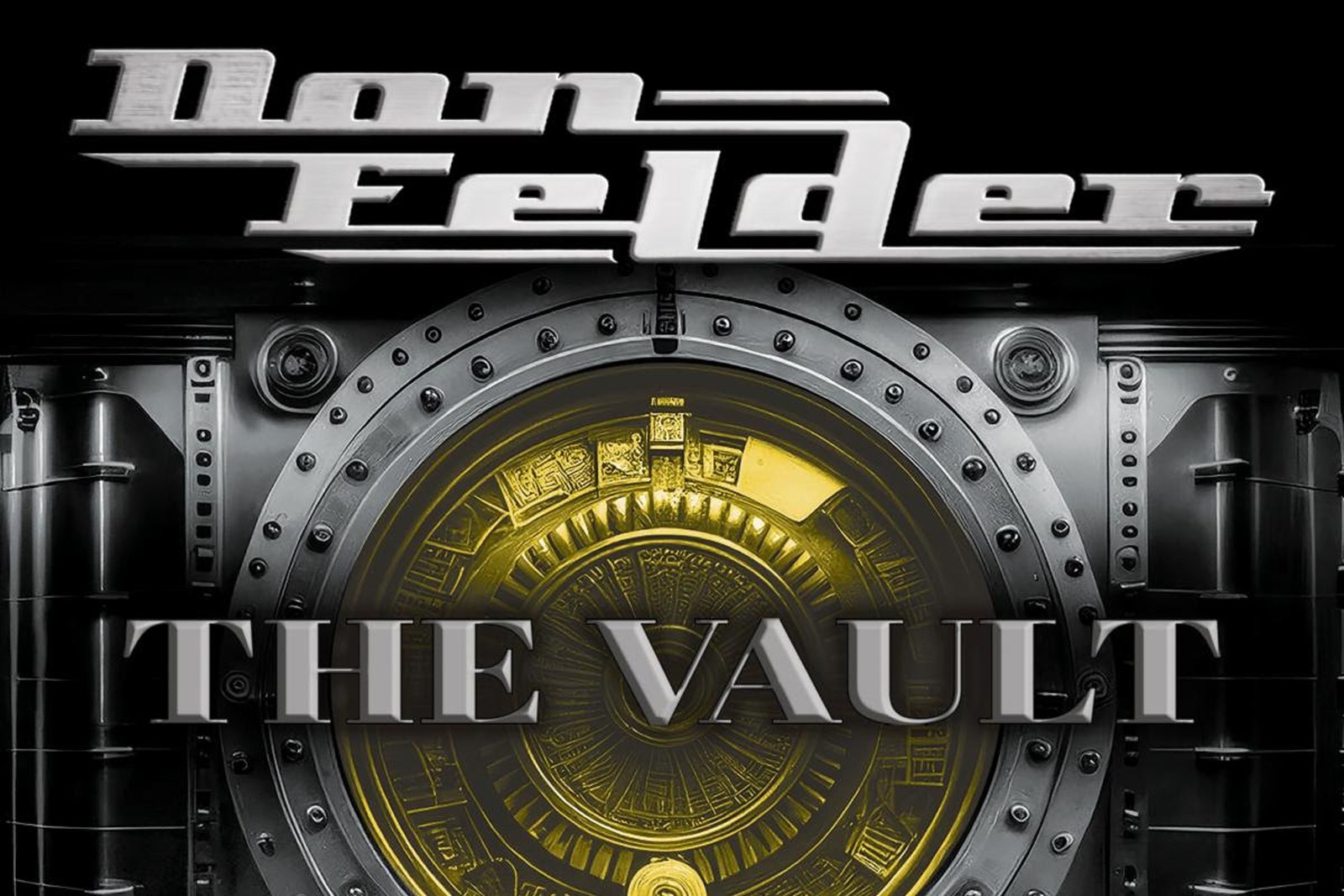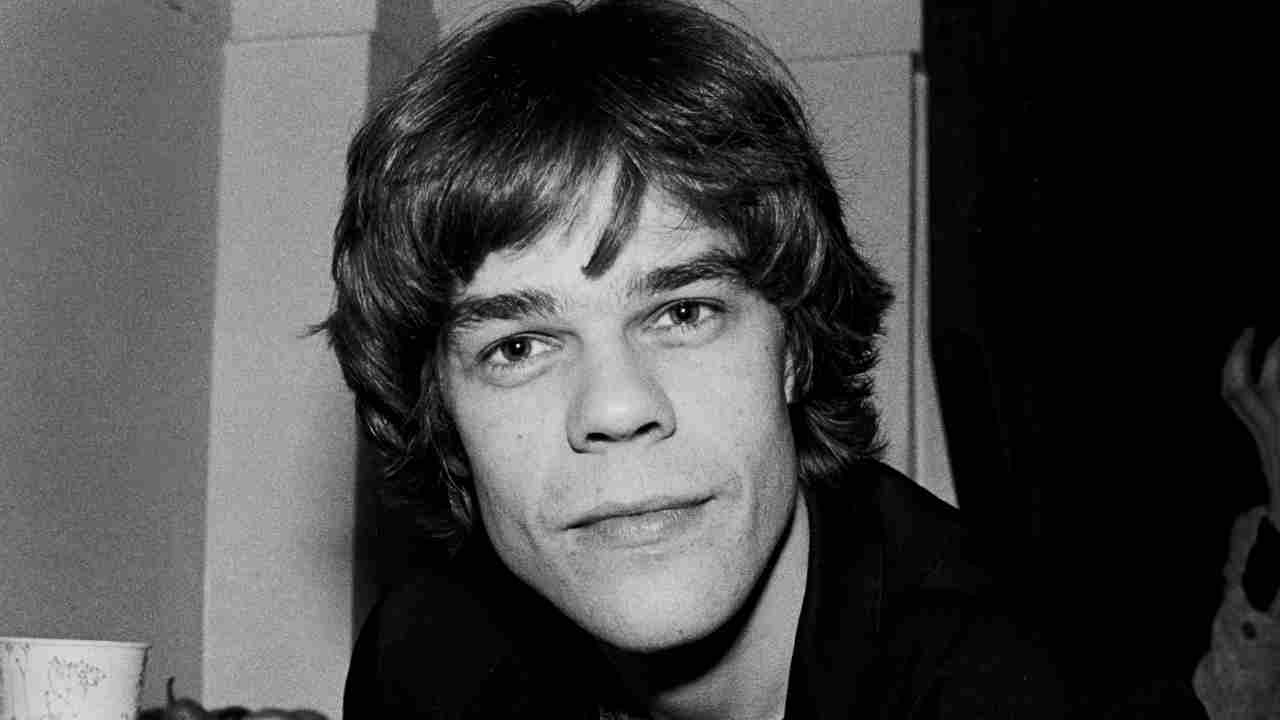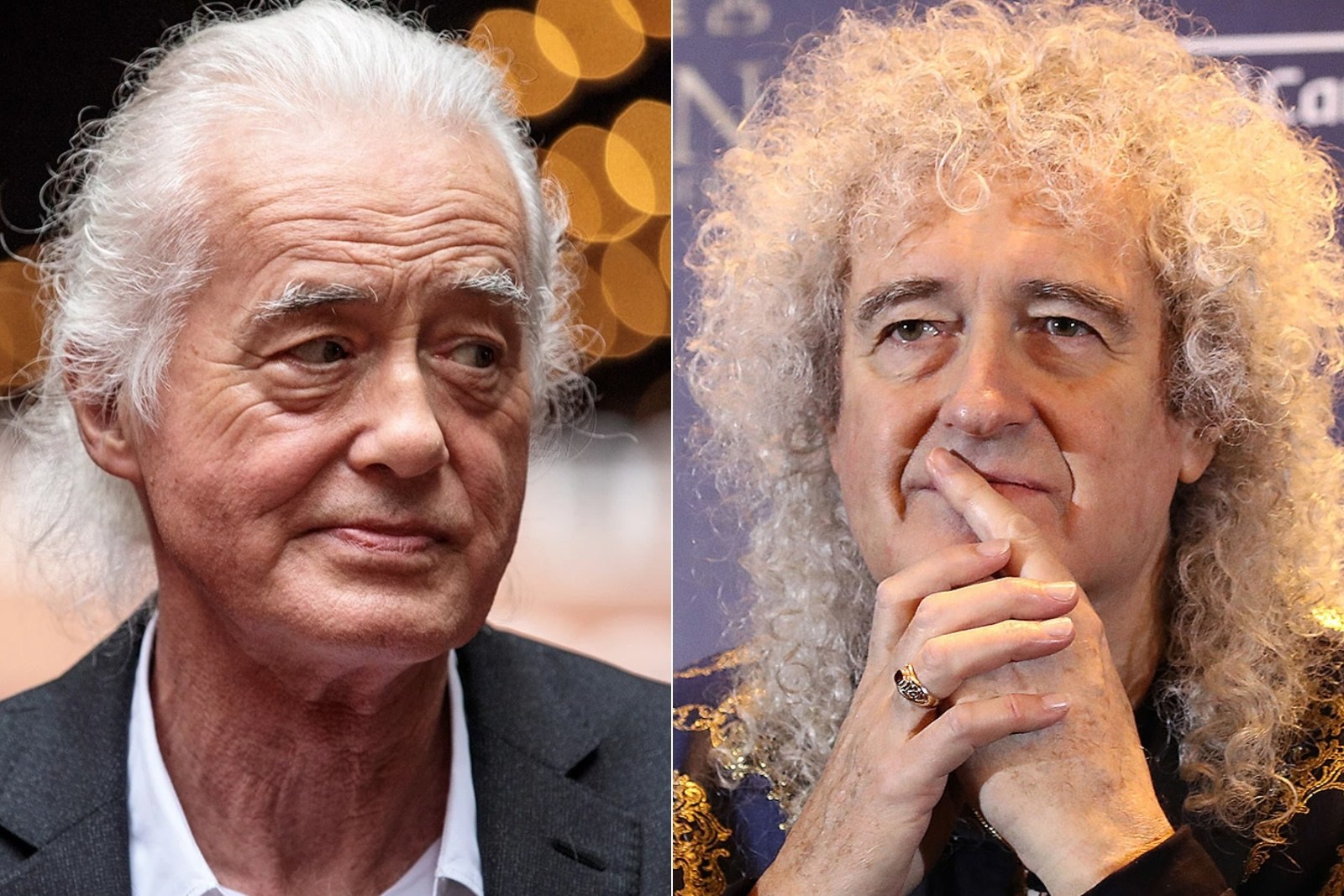
Feature Photo: Randy Miramontez / Shutterstock.com
Cover songs have long played a significant role in music history, offering artists the chance to reinterpret the work of their predecessors and sometimes even surpass the original in terms of cultural impact and commercial success. This article isn’t about debating whether the remakes are better or more artistically superior than the originals—that’s a matter of personal taste. Instead, we focus on ten rock covers that undeniably became more popular, culturally ingrained, or commercially successful than the original versions. Of course, the success and popularity of these songs also have much to do with the period in which they were released. The remakes of these songs gained a wider audience, cementing their place in pop culture, often due to the sheer popularity and influence of the artists performing them. After all, it’s hard to argue with the cultural dominance of bands like The Beatles, Led Zeppelin, and other iconic names on this list.
Of course, many fans may still deeply appreciate the originals, preferring their raw emotion or unique artistry. Still, the objective here is to highlight songs that, through their covers, reached new heights of mainstream success. These cover versions often skyrocketed up the charts, helped in part by the fame of the artists performing them, but also because the interpretations resonated with audiences in ways the originals may not have. Whether it’s the infectious energy of The Beatles’ take on “Twist and Shout,” the transformative rock rendition of “All Along the Watchtower” by Jimi Hendrix, or the unforgettable power of Aretha Franklin’s “Respect,” these covers took on a life of their own. They ultimately became the definitive versions in the eyes of many.
Each song on this list became more widely known through its cover. For instance, The Beatles’ version of “Twist and Shout” became a global hit, while Jimi Hendrix’s psychedelic reimagining of Bob Dylan’s “All Along the Watchtower” became synonymous with his legacy. Similarly, Led Zeppelin‘s take on “When the Levee Breaks” transformed an old blues track into a powerful hard rock anthem, and Joan Jett made “I Love Rock ‘n’ Roll” a genre-defining song that still dominates airwaves. The Black Crowes brought Otis Redding’s soulful “Hard to Handle” to a new generation of rock fans. Crosby, Stills, Nash & Young turned Joni Mitchell’s “Woodstock” into a counterculture anthem that echoed across America.
In wrapping up this list, it’s important to remember that music is deeply subjective. While some purists may always favor the original recordings, there’s no denying the lasting impact and success that these cover versions achieved. These remakes didn’t just honor the originals; they reshaped them, allowing the songs to find new life and new audiences, ensuring their place in music history. Whether you prefer the covers or the originals, there’s no question that these ten songs have made an indelible mark, often overshadowing the songs that first inspired them.
# 10 – Jersey Girl – Bruce Springsteen
The first song on this list is Bruce Springsteen’s cover of Tom Waits’ “Jersey Girl.” Springsteen’s version became more widely known than Waits’ original, although their respective fan bases love both. Tom Waits originally released the track on his 1980 album Heartattack and Vine. The song reflects Waits’ distinctive, gritty sound, with raspy vocals and raw, stripped-down instrumentation. Waits paints a romanticized, yet grounded picture of everyday life with a ‘Jersey Girl,’ capturing love in simple moments, from a carnival ride to walking down the street together.
Springsteen, known for his deep connection with New Jersey and his ability to tell blue-collar stories, made “Jersey Girl” his own when he began performing it live in 1981. It quickly became a fan favorite and resonated deeply with his audience, eventually making its way onto his 1986 live album Live/1975–85. Springsteen stayed faithful to the romantic essence of Waits’ original, but added his own flair, making it more polished, with a slightly more polished production. His version includes an additional verse that reflects his narrative style, where he brings in the character of a woman who works hard, and they plan to go dancing after dropping her daughter off at her mother’s house. This twist in Springsteen’s version added an extra layer of depth and storytelling that resonated with his fans.
Musically, Springsteen’s rendition is more anthemic than Waits’ raw, folksy original. The “sha la la la” refrain, present in both versions, creates a sense of nostalgic romance, but Springsteen’s interpretation comes with a grander, more sweeping feel that connects deeply with his live audience, especially given his iconic New Jersey roots. Waits’ original is beloved for its intimacy. Still, Springsteen’s version became more commercially successful, gaining him wider recognition with mainstream audiences, partly because it echoed the themes of working-class love and joy that made him a legend.
While Waits’ version remains a hidden gem cherished by his dedicated fans, many more associate Springsteen’s “Jersey Girl” with the title. It embodies that universal longing for love and home that became a staple of Springsteen’s live performances.
Read More: Complete List Of Bruce Springsteen Albums And Songs
Read More: Complete List Of Tom Waits Albums And Songs
The original Tom Waits version was released on the Heartattack And Vine album in 1981.
# 9 – Hard To Handle – The Black Crowes
The Black Crowes’ cover of Otis Redding’s “Hard to Handle” is a prime example of a rock cover achieving greater commercial success than the original. Originally written and recorded by Otis Redding in 1968, the song was released posthumously as the B-side to “Amen” and appeared on his album The Immortal Otis Redding. Despite Redding’s legendary status, his version of “Hard to Handle” only reached number 38 on the Billboard R&B chart and number 51 on the pop chart, making it one of his less commercially prominent tracks.
Redding’s original version of “Hard to Handle” is a soul powerhouse, characterized by his signature gritty, emotive vocals and a tight, energetic arrangement. With his soulful delivery, Redding brought a raw authenticity to the song’s boastful lyrics, which feature a man confidently declaring his irresistibility. Despite its relatively modest chart performance, Redding’s “Hard to Handle” has become a beloved deep cut in his discography, representing the boldness and soul of his work during the 1960s.
In 1990, The Black Crowes brought “Hard to Handle” to new heights when they covered it for their debut album Shake Your Money Maker. Their rock-infused rendition added a layer of Southern rock grit, driven by Chris Robinson’s raspy vocals and a dynamic guitar-heavy arrangement. The Crowes’ version of the song was a major hit, reaching number 26 on the Billboard Hot 100, far surpassing the chart success of Redding’s original. The song also gained significant radio play, helping propel Shake Your Money Maker to multi-platinum status and establishing the band as a key player in the early ’90s rock scene.
The Black Crowes’ interpretation of “Hard to Handle” maintained the core swagger of Redding’s version but amplified it with a more aggressive and bluesy rock energy. While Redding’s version shines with soulful restraint and sharp brass accents, the Crowes’ rendition is louder and more forceful, making it a crowd favorite at live shows. The contrast between the soul legend’s original and the Crowes’ Southern rock revival approach highlights the song’s versatility, showing how a great track can transcend genres and generations.
When comparing these two versions, the Black Crowes’ rendition undoubtedly achieved more widespread popularity, becoming a staple of ’90s rock radio and live performances. However, the cover’s success doesn’t diminish the original’s historical and musical importance, as Otis Redding’s influence remains undeniable. Ultimately, The Black Crowes’ version of “Hard to Handle” stands as one of the best rock covers that both honors its soulful roots and brings the song to a new audience with a fresh, rock-driven edge.
Read More: Top 10 Black Crowes Songs We Love The Most
Read More: Top 10 Otis Redding Songs Loved By Fans
The original Otis Redding version was released on the album The Immortal Otis Redding in 1968.
# 8 – I Love Rock And Roll – Joan Jett & The Blackhearts
Joan Jett & The Blackhearts’ cover of “I Love Rock ‘n’ Roll” became one of the most iconic anthems in rock history, far surpassing the popularity of the original version by The Arrows. The original song, written by Alan Merrill and Jake Hooker, was first recorded by the British band The Arrows in 1975. Initially released as a B-side, it eventually gained enough attention to be promoted to the A-side, but despite some TV exposure and a dedicated UK following, the song didn’t achieve significant commercial success. The Arrows’ version, produced by Mickie Most, is more of a straightforward rock song, with Merrill’s vocals providing a gritty edge, but it never gained the widespread recognition that Joan Jett’s rendition later did.
Joan Jett first encountered “I Love Rock ‘n’ Roll” while touring in the UK with her band The Runaways in 1976, where she saw The Arrows perform the song on TV. Jett, instantly attracted to the raw energy of the track, initially recorded it in 1979 with Paul Cook and Steve Jones from The Sex Pistols, but it was her 1981 re-recording with The Blackhearts that turned the song into a massive hit. Released as the first single from her album I Love Rock ‘n’ Roll, Jett’s version hit number one on the Billboard Hot 100, holding that position for seven weeks. It became one of the defining tracks of the early ’80s rock scene, resonating with a generation of fans. The success of this cover catapulted Jett to rock stardom, and the song became a staple of her live performances, as well as a permanent fixture in rock music culture.
The differences between the two versions are notable. The Arrows’ original version features a more relaxed and less aggressive delivery, while Joan Jett’s take on the song is gritty, rebellious, and fueled by raw energy. Her version injects the track with a heavier rock sound, thanks to her raspy vocals and the powerful backing of The Blackhearts. The anthemic quality of the chorus in Jett’s rendition, combined with its hard-driving rhythm, made it an instant classic. Jett’s performance gave the song a new life, making it an empowering rock anthem that outshined its predecessor.
While the original by The Arrows remains a respected track within its niche, Joan Jett’s cover not only became more popular but also solidified her as a key figure in rock history. Her version of “I Love Rock ‘n’ Roll” is now synonymous with the genre itself and stands as one of the most successful rock covers ever, showing how a reinterpretation of a lesser-known song can transcend its origins to become a cultural phenomenon.
Read More: Our 10 Favorite Joan Jett Songs
The original version released by the Arrows in 1975.
# 7 – Some Kind of Wonderful – Grand Funk
“Some Kind of Wonderful,” originally recorded by the Soul Brothers Six in 1967, was a modest hit in the R&B world, peaking at number 91 on the U.S. Billboard Hot 100. Written by John Ellison, the song features a soulful groove and heartfelt lyrics about being head-over-heels in love. The original version is grounded in the rhythm and blues style, driven by a smooth vocal delivery and the band’s laid-back instrumentation. While it gained some recognition, the Soul Brothers Six version never became a mainstream hit and remained relatively obscure until Grand Funk Railroad reintroduced it to a wider audience.
Grand Funk Railroad’s 1974 cover of “Some Kind of Wonderful” became the definitive version of the song, transforming it into a rock anthem that reached number three on the Billboard Hot 100. This rendition, included on their album All the Girls in the World Beware!!!, brought a raw, energetic sound to the track, significantly amplifying its appeal. Grand Funk’s version has a heavier rhythm, with powerful guitar riffs and a dynamic vocal performance by Mark Farner, which helped elevate the song’s intensity. The band’s rock-oriented approach gave the track a broader crossover appeal, allowing it to resonate with both rock and pop audiences, making it far more commercially successful than the original.
When comparing the two versions, the most notable difference is the shift in genre. The original Soul Brothers Six version leans into its R&B roots with a smoother, more laid-back vibe, while Grand Funk’s take is electrified with a rock-and-roll edge. The cover’s high-energy delivery, complete with Jimmy Ienner’s production that emphasizes the band’s bold instrumentation, catapulted the song into the top three on the charts, whereas the original only scratched the surface of mainstream success. Grand Funk’s version also found a lasting legacy, with continued radio play, inclusion in media like Grand Theft Auto: San Andreas, and it even outshone other cover attempts by artists like Joss Stone and Huey Lewis and the News.
Lyrically, both versions retain the simple, yet powerful message of love and admiration, with the chorus proclaiming, “My baby, she’s some kind of wonderful.” The straightforward and relatable nature of the lyrics is a key factor in the song’s enduring popularity across different eras and genres. Grand Funk’s rendition, however, transformed the song from an R&B groove into a rock classic, solidifying its place as one of the most successful rock covers of all time.
In summary, while the Soul Brothers Six introduced “Some Kind of Wonderful” to the world, Grand Funk Railroad’s energetic and rock-infused interpretation made the song a chart-topping hit, leaving a lasting impact on rock history and achieving a level of success far beyond the original.
Read More: An Interview With Don Brewer Of Grand Funk Railroad
The original version was released by Soul Brothers Six in 1967
# 6 – All Along The Watchtower – Jimi Hendrix Experience
“All Along the Watchtower” was first recorded and written by Bob Dylan for his 1967 album John Wesley Harding. The original version is a stark, minimalist track with acoustic guitar, harmonica, and Dylan’s signature nasal delivery. Its cryptic lyrics, featuring a conversation between a joker and a thief, have been analyzed extensively over the years, with some drawing biblical parallels, particularly to verses in the Book of Isaiah. Dylan’s version is revered for its lyricism and storytelling, though it was not initially released as a single and didn’t achieve major commercial success on its own.
The song took on new life when Jimi Hendrix recorded his cover for the 1968 album Electric Ladyland. Hendrix’s rendition, released just six months after Dylan’s original, drastically reimagined the song by infusing it with his signature electric guitar work, layering psychedelic rock over Dylan’s folk composition. The Hendrix version reached the top 20 on the Billboard Hot 100, becoming an immediate hit and earning a Grammy Hall of Fame award in 2001. Hendrix’s searing guitar solos and the intensity of the performance brought a new energy to the song, making it a defining moment of his career and forever linking “All Along the Watchtower” to his legacy.
Comparing the two versions reveals just how transformative a cover can be. Dylan’s original is haunting and introspective, with a sense of foreboding, while Hendrix turned it into a full-blown rock anthem. Hendrix’s electric interpretation expanded the song’s reach beyond the folk and rock audiences of the time, making it a mainstream hit. The heavy guitar riffs, along with his meticulous production, add layers of complexity and urgency to the song’s message, making Hendrix’s version the definitive rendition in the minds of many listeners.
Dylan himself has acknowledged the impact of Hendrix’s version, going so far as to alter his live performances of the song to echo Hendrix’s interpretation. In interviews, Dylan has expressed admiration for Hendrix’s cover, stating that Hendrix found things in the song that he didn’t realize were there, further elevating the song’s mystique.
In terms of cultural significance, Hendrix’s “All Along the Watchtower” far surpassed Dylan’s original recording. While the Dylan version laid the foundation, Hendrix’s electrifying performance turned the song into a classic rock staple, ingrained in rock history and recognized as one of the greatest covers ever recorded.
Read More: Why Jimi Hendrix Called Chicago’s Terry Kath The Best Guitarist In The Universe
Read More: Best Bob Dylan Songs Of The 1980’s
# 5 – Respect – Aretha Franklin
“Respect” was originally recorded and written by Otis Redding in 1965 for his album Otis Blue/Otis Redding Sings Soul. Redding’s version conveys a man asking for respect from his woman, both at home and in their relationship. His delivery is intense, driven by raw emotion, and reflects the traditional male perspective of the time. Redding’s original was successful, reaching number 35 on the Billboard Hot 100 and number 4 on the R&B chart, but it didn’t reach the level of cultural impact it would later achieve.
In 1967, Aretha Franklin recorded and reinterpreted “Respect,” turning it into an anthem that demanded respect not only in romantic relationships but also in society at large. Franklin’s version was a feminist and civil rights declaration, resonating strongly with the changing social climate of the 1960s. She flipped the gender perspective of the song, adding her famous “R-E-S-P-E-C-T” chorus, background vocals, and the demand for dignity and equality. Her version shot to number one on the Billboard Hot 100 and became an international hit, reaching top positions in countries such as Canada and the UK.
The two versions of “Respect” differ not only in their narratives but also in their musical arrangement. While Redding’s original is more of a gritty soul number, Franklin’s version introduces a fuller, more polished sound. The addition of her powerhouse vocals, the iconic spelling-out of “R-E-S-P-E-C-T,” and the “sock it to me” background vocals created a sense of urgency and celebration that resonated deeply with listeners. Franklin’s rendition is often cited as one of the greatest recordings of all time, earning her two Grammy Awards in 1968 and becoming her signature song.
The popularity of Franklin’s cover far surpassed that of Redding’s original. While Redding’s version was respected in its own right, Franklin’s interpretation became a cultural phenomenon. Franklin’s “Respect” is widely regarded as a feminist and civil rights anthem, a song that captured the spirit of empowerment and change. In contrast, Redding’s version, though significant in soul music, lacked the same cultural weight. It is Aretha Franklin’s version that has endured across generations, becoming one of the most iconic songs in music history.
The transformation from Redding’s earnest plea to Franklin’s assertive demand highlights how the same song can be adapted to fit different times, perspectives, and movements. Like other covers on this list, Franklin’s “Respect” illustrates how a reinterpretation of an original can take on new meaning, often outshining its predecessor in both popularity and cultural relevance.
Read More: 10 Essential Aretha Franklin Songs
Read More: Top 10 Otis Redding Songs Loved By Fans
# 4 – When the Levee Breaks – Led Zeppelin
The original version of “When the Levee Breaks” was written and recorded by the blues duo Memphis Minnie and Kansas Joe McCoy in 1929. Their song was a response to the devastating Great Mississippi Flood of 1927, which left a profound impact on the Mississippi Delta. The lyrics recount a personal struggle, detailing the flood’s destruction and the toll it takes on a man who loses everything. Minnie and McCoy’s version is a raw, acoustic blues number that captures the despair and resilience of those affected by the flood. While it was a moderate hit at the time, it was primarily known within blues circles and did not achieve widespread mainstream recognition.
In contrast, Led Zeppelin’s 1971 reimagining of the song for their untitled fourth album (commonly referred to as Led Zeppelin IV) elevated the track to an entirely new level of popularity. Led Zeppelin transformed “When the Levee Breaks” from a traditional acoustic blues song into a hard-hitting rock anthem. Robert Plant kept many of the original lyrics, but Jimmy Page introduced a new, thunderous guitar riff, while John Bonham’s drumming became the defining characteristic of the song. Bonham’s massive, echo-laden drum sound—achieved by recording in a stairwell with unconventional microphone placement—became iconic and is often regarded as one of the greatest drum performances in rock history.
While Minnie and McCoy’s version focused on the intimate and personal effects of the flood, Zeppelin’s cover brought an apocalyptic intensity, with a droning, sludgy arrangement that conveyed a sense of impending doom. The heavier rock treatment resonated with a broader audience, and the song became one of the standout tracks on Led Zeppelin IV, an album that is now considered one of the greatest rock records of all time. Zeppelin’s version of “When the Levee Breaks” remains far more popular than the original, having been covered by numerous artists and featured in film and television.
Led Zeppelin’s reinterpretation of this blues classic not only brought the song to a global audience but also highlighted the band’s ability to take traditional blues influences and make them their own. It also set the standard for how modern rock bands could rework blues tracks, placing it alongside other iconic covers that surpassed their original versions in terms of popularity and cultural significance. The song’s enduring appeal is largely due to its innovative production and Bonham’s legendary drumming, which continues to inspire musicians to this day.
Read More: Our 10 Favorite Led Zeppelin Album Covers
# 3 – Blinded By The Light – Manfred Man’s Earth Band
“Blinded by the Light” was originally written and recorded by Bruce Springsteen as the opening track on his 1973 debut album Greetings from Asbury Park, N.J.. It was a song born out of necessity, as Columbia Records president Clive Davis told Springsteen the album needed a hit single. Springsteen, always a lyrical virtuoso, wrote “Blinded by the Light” using a rhyming dictionary, creating a barrage of eccentric and vivid imagery. The autobiographical nature of the song shines through lines like “Madman drummers, bummers, and Indians in the summers with a teenage diplomat,” referencing his drummer, Vini “Mad Dog” Lopez, and his Little League team, the Indians. Despite the creative wordplay and evocative storytelling, Springsteen’s version did not gain much commercial traction, with the single failing to chart.
In 1976, British rock band Manfred Mann’s Earth Band reimagined the song for their album The Roaring Silence, transforming Springsteen’s folk-rock number into a progressive rock hit. Their version became far more popular than Springsteen’s original, reaching number one on the Billboard Hot 100 in February 1977 and also topping the charts in Canada. Mann’s rendition is notable for its rich, synthesized arrangement and the famous “Chopsticks” piano melody that appears during the song’s bridge. The band’s creative instrumentation added a new dynamic to the song, making it a memorable anthem of the era. This cover was not only more commercially successful, but it also became a radio staple and remains a signature song for Manfred Mann’s Earth Band.
A point of infamy in Mann’s version comes from the alteration of Springsteen’s original lyric “cut loose like a deuce” to “revved up like a deuce.” The pronunciation in the Earth Band’s rendition led to widespread confusion, with listeners mishearing it as “wrapped up like a douche.” Springsteen himself has joked that this lyrical change helped the song gain popularity, turning it into the iconic hit it became.
While Springsteen’s version of “Blinded by the Light” is appreciated by his core fans for its lyrical complexity and storytelling, Manfred Mann’s Earth Band’s cover stands out as the more commercially successful version, cementing its place in rock history. The two versions highlight the power of reinterpretation, showing how a song can take on new life and appeal in different musical contexts.
Read More: Chris Slade of Manfred Man’s Earth Band: The ClassicRockHistory.com Interview
Read More: Top 10 Bruce Springsteen Albums
# 2 – Twist And Shout – The Beatles
“Twist and Shout” was originally written by Phil Medley and Bert Berns (credited as Bert Russell) and first recorded by The Top Notes in 1961. However, it was the Isley Brothers’ 1962 version that truly introduced the song to a wider audience, infusing it with a powerful blend of rock and gospel-fired R&B. The Isley Brothers’ rendition became their first Top 20 hit on the U.S. Billboard Hot 100, peaking at number 17, and established the song’s blueprint for future covers.
The Beatles’ 1963 version of “Twist and Shout” took the song to new heights. Recorded as the final track during a grueling 12-hour session for their debut album Please Please Me, John Lennon’s raw, raspy vocals became a defining characteristic of the song. Famously recorded in just one take due to Lennon’s strained voice, the Beatles’ rendition has since been lauded as one of the most iconic performances in rock history. When released as a single in the United States in 1964, it reached number two on the Billboard Hot 100, only held back by another Beatles single, “Can’t Buy Me Love.” In contrast to the Isley Brothers’ smoother, soulful approach, the Beatles gave the song a frenzied, urgent energy, making it a defining moment of Beatlemania.
While the Isley Brothers’ version brought the song moderate success, it was the Beatles who propelled “Twist and Shout” into the stratosphere. Their version became a cultural phenomenon, making them the first band to hold all five top spots on the Billboard Hot 100 during one week. Over time, the Beatles’ rendition has far eclipsed the original in terms of popularity and enduring influence. Both versions remain beloved, but it is the Beatles’ raw, electrifying take on “Twist and Shout” that stands as one of the most celebrated rock covers in music history.
The song’s infectious rhythm and energy have kept it alive in pop culture, from being featured in films like Ferris Bueller’s Day Off to continued radio play. The Beatles’ version, in particular, has become synonymous with youthful exuberance, firmly planting it among the most successful covers of all time.
Read More: Top 10 Beatles Love Songs
The original version by The Top Notes
# 1 – Woodstock – Crosby, Stills, Nash & Young
“Woodstock” is a song deeply embedded in the spirit of the 1960s counterculture, capturing the idealism and cultural significance of the famous Woodstock Music and Arts Festival held in August 1969. Originally written and recorded by Joni Mitchell, the song reflects her experience of the festival through the lens of her then-boyfriend, Graham Nash, who had performed there with Crosby, Stills, Nash & Young. Mitchell herself did not attend the festival, a decision prompted by her manager, who advised that it would be better for her to appear on The Dick Cavett Show instead. Her inability to attend gave her a unique perspective, writing the song as an outsider reflecting on the massive cultural event that symbolized peace and unity.
Joni Mitchell’s original version of “Woodstock,” released on her 1970 album Ladies of the Canyon, is a haunting, introspective piece that focuses on spiritual and personal transformation. Using a minimalist arrangement of piano and layered vocals, Mitchell emphasizes the inner journey of the narrator, yearning for a return to innocence and a utopian vision of the world. Her lyrics weave sacred imagery, most notably the line “we’ve got to get ourselves back to the garden,” which compares the festival to the Garden of Eden. The mood is subdued, melancholic, and reflective, capturing the complexity of the 1960s idealism and its intersections with the realities of war, environmental destruction, and social upheaval.
While Mitchell’s version is deeply moving, Crosby, Stills, Nash & Young’s 1970 rendition transformed “Woodstock” into a rock anthem. Their version, featured on their critically acclaimed album Déjà Vu, brought the song to a much larger audience, and it quickly became the most well-known version. Where Mitchell’s version was meditative, CSNY’s arrangement is upbeat, driven by Neil Young’s electric guitar riffs and Stephen Stills’ impassioned lead vocals. Their hard-rock arrangement emphasizes the communal celebration and energy of the festival, contrasting with the quiet introspection of Mitchell’s take. The harmonized chorus, “We are stardust, we are golden,” became iconic, and the band’s version reached #11 on the Billboard Hot 100, solidifying its place in rock history.
In terms of popularity, Crosby, Stills, Nash & Young‘s version undeniably became the more commercially successful and culturally pervasive interpretation, regularly played on classic rock radio stations and appearing in the 1970 documentary Woodstock. However, both versions remain highly respected for their distinct interpretations of the same source material. Mitchell’s original has a quieter, more contemplative following, celebrated for its lyricism and emotional depth. At the same time, the CSNY cover stands as one of the definitive songs of the rock era, capturing the vibrant energy of the late 1960s. As the closing song of this list, “Woodstock” is a perfect capstone, embodying the spirit of rock, the power of musical reinterpretation, and the lasting cultural significance of a generation-defining event.
Read More: Top 10 Crosby, Stills, Nash & Young Songs
Read More: Top 10 Joni Mitchell Songs
Original Joni Mitchell version.
10 Rock Cover Songs More Popular Than The Originals article published on Classic RockHistory.com© 2025


























